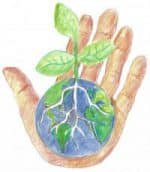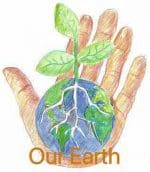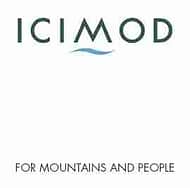Climate change impact on mountains
ICIMOD
Studies on Climate Change impact on Himalaya - Hindu Kush mountains
Mountains are particularly vulnerable to climate change. The high peaks of the Himalayas are a vast storehouse of water in frozen form, with the world’s greatest concentration of ice outside the polar region.
This “third pole” helps to provide the water that 1.3 billion people depend on for survival, along with the annual monsoon, which is also impacted by climate change.
The warming trend in the Himalayas is higher than the global average, which is a cause for grave concern. Climate change also contributes to the frequency and magnitude of extreme weather events and natural hazards.
Unseasonal rainfall can lead to flooding and destroy crops; too little rain can also mean crop failure and have broad-reaching consequences on the economy and people’s lives.
Habitat change has an impact on wildlife, farming and grazing conditions, natural resources from timber to medicinal herbs, and the survival of a rich variety of unique cultures.
(Text: ICIMOD, Kathmandu)
Example
Glacier Lake Outburst Flood Report
This assessment of glacial lakes and glacial lake outburst flood (GLOF) risk in Nepal was conducted with the
aim of developing recommendations for adaptation to, and mitigation of, GLOF hazards (potentially dangerous glacial lakes) in Nepal, and contributing to developing an overall strategy to address risks from GLOFs in the future.
The assessment is also intended to provide information about GLOF risk assessment methodology for use in GLOF risk management in Nepal.

Tsho Rolpa lake as seen from moraine dam
The methodology that was developed and applied in the assessment can also be broadly applied throughout the Hindu Kush-Himalayan region. The assessment has been completed through activities carried out in collaboration with national partners, which include government and non-government institutions as well as academic institutions and universities.
Text. & image: ICIMOD, Kathmandu)
The Hindu Kush Himalaya region is the world's third-largest repository of ice, after the North and South Poles -- and if current melting rates continue, two-thirds of its glaciers could be gone by the end of this century.
What will happen if we let them melt away? Environmentalist and former Prime Minister of Bhutan Tshering Tobgay shares the latest from the "water towers of Asia," making an urgent call to create an intergovernmental agency to protect the glaciers -- and save the nearly two billion people downstream from catastrophic flooding that would destroy land and livelihoods.
Tsho Rolpa glacier lake, Rolwaling valley, Nepal
Studies and images
Video helicopter flight Tsho Rolpa Glacier Lake
Video: USGS (2015)
First the flight will follow Rolwaling valley, passing Beding village (left side of the river) after 6:40 minutes.
Tsho Rolpa glacier lake will be shown about 11 minutes after the start of the video.




